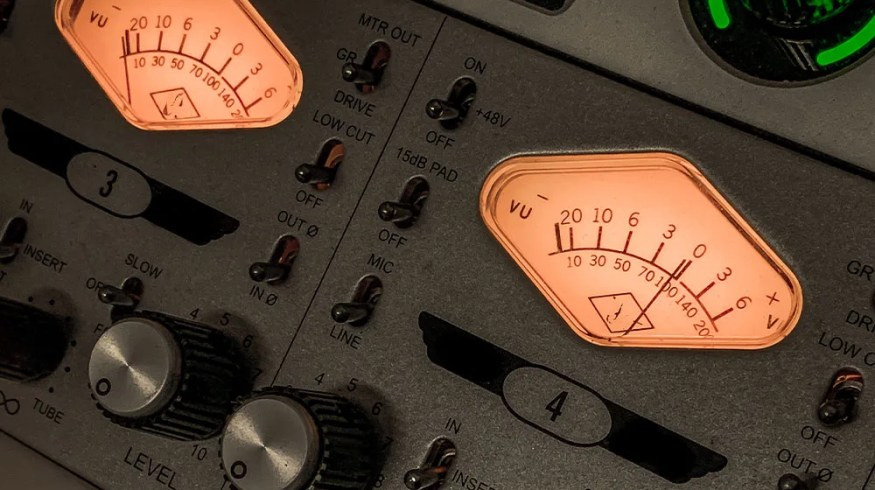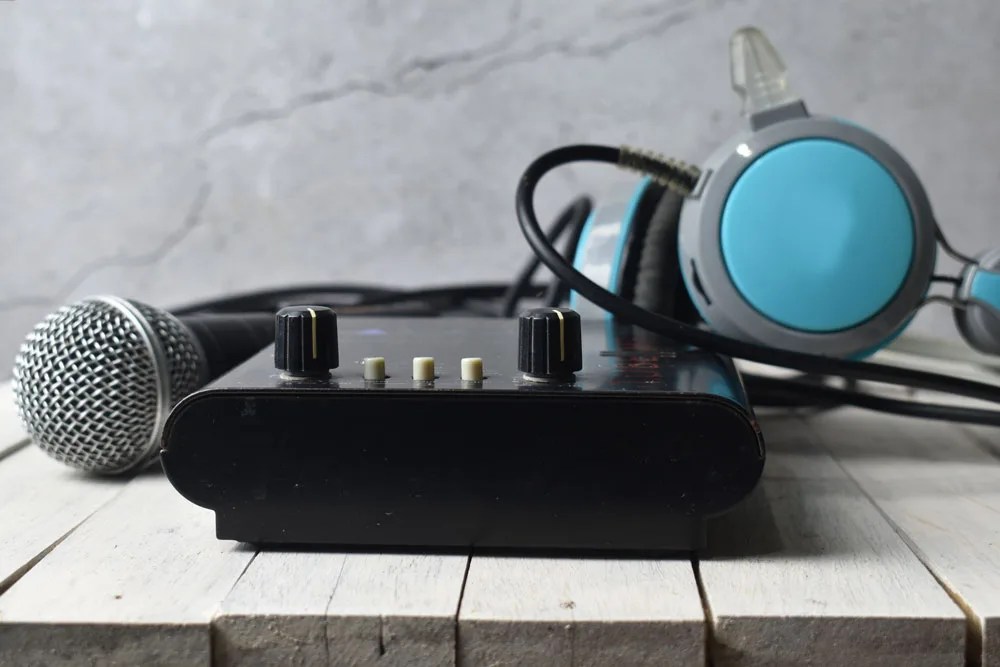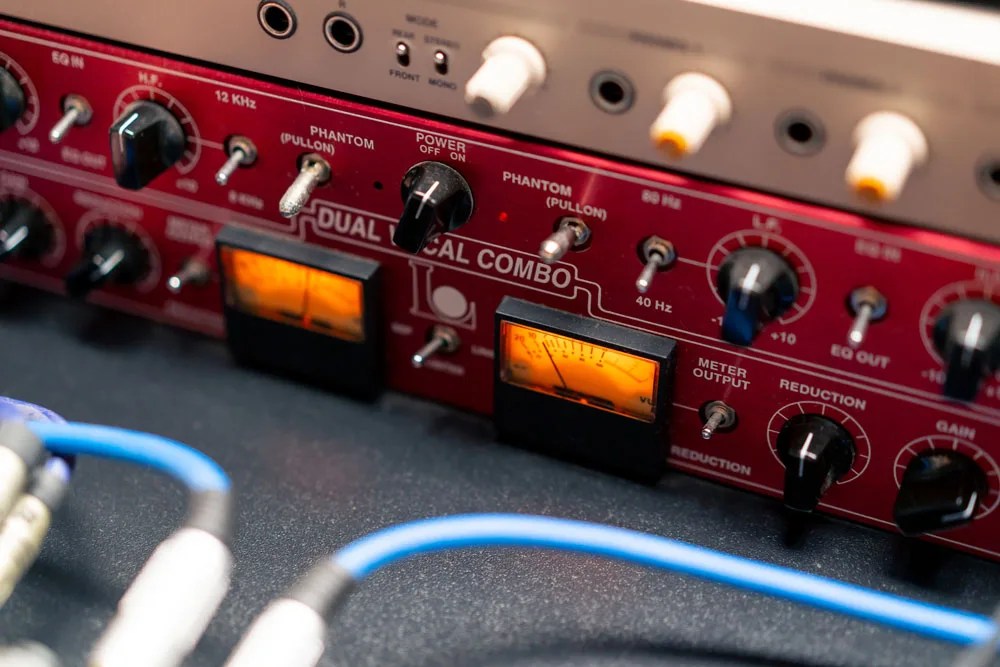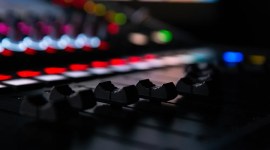
The Functions of a Microphone Preamplifier
Mic preamps are the unsung hero of pristine audio recordings. Here’s how they work and why they matter to your project’s sound.
Microphones serve as invaluable tools for capturing audio sound waves and converting them into digital audio signals, facilitating storage and editing on computer systems.
Within this intricate process, a preamplifier—often referred to as a preamp—emerges as a pivotal component, wielding the crucial role of amplifying the microphone’s initially weak signals to a level compatible with various audio equipment.
Let’s take a closer look at the fundamental functions of a preamplifier and its potential to elevate the quality of your audio recordings.

Understanding the Preamp
A preamplifier, or preamp for short, is meticulously engineered to amplify feeble signals emanating from a microphone, elevating them to a higher amplitude. This amplification is essential to standardize the signal to an operational level compatible with a range of audio equipment. When a microphone is connected to an audio interface, the signal embarks on a journey through a preamp before undergoing further processing.
Microphones, in essence, function as transducers, converting energy from one form to another. The microphone’s diaphragm orchestrates this transformation, translating minuscule air molecule vibrations (sound waves) into minute electrical signals.
However, these diminutive signals are unsuitable for direct processing by mixers and interfaces. Enter the preamp, which adeptly boosts these signals without introducing any undesirable noise interference.
In situations where you find yourself immersed in a noisy recording environment, where background clamor threatens to overshadow your desired audio source, preamplifiers come to the rescue. By ameliorating the signal-to-noise ratio, they pave the way for a clearer and more pristine audio signal.

The Inner Workings of a Preamplifier
So, what transpires within the confines of a microphone preamplifier to effectuate this transformation? Let’s break down the distinct stages that the signal traverses.
Input Stage
The initial stage—aptly named the input stage—welcomes the signal from the microphone, preparing it for the forthcoming amplification.
Amplifier Stage
The amplifier stage is crucial, as it’s responsible for elevating the signal from the input stage to a higher and more conducive level. This stage often encompasses various components, including transistors.
Transistors are semiconductor devices that play pivotal roles in electrical circuits, serving purposes such as amplification, switching, and signal processing. Typically configured in a common-emitter amplifier arrangement, transistors deliver high gain to a low-input signal, making them indispensable components in preamplifiers.
Output Stage
Finally, the output stage takes the amplified signal and delivers it to the subsequent processing stage, be it a recording device or a mixing console, facilitating further manipulation.
Preamps and Audio Quality
The pivotal role of preamplifiers in shaping audio quality cannot be overstated. By boosting the microphone’s initial signals, preamps ensure that the recorded sound exhibits clarity, fidelity, and a robust dynamic range.
This is particularly crucial when dealing with sensitive audio sources, such as vocals or acoustic instruments, where capturing subtle nuances is paramount.
Without the intervention of a preamp, these nuances might remain buried beneath the noise floor, resulting in a lackluster recording.
Customizing Sound with Preamps
Beyond the fundamental task of signal amplification, preamplifiers offer artists and sound engineers a powerful tool for customizing and sculpting their audio. The ability to adjust specific frequency bands using equalization empowers professionals to tailor the sound to match their creative vision.
Whether it’s accentuating the warmth of a vocal performance, enhancing the punch of a bass guitar, or taming the sharpness of cymbals in a drum kit, preamps provide precise control over tonal characteristics.
Incorporating Preamps in Studio Setups
In professional recording studios, preamplifiers often occupy a central position in the signal chain. They are strategically placed between microphones and other recording equipment, such as audio interfaces or mixing consoles.
This strategic placement allows for real-time adjustments and fine-tuning of the microphone’s output before it undergoes further processing or recording.
Musicians and vocalists benefit from this immediate control, enabling them to optimize their sound during recording sessions.
Additional Preamp Features and Controls
Once the preamplification process has imbued the input signals with heightened vigor, additional features and controls step in to refine and enhance sound quality.
Here are some common features found in microphone preamplifiers.
Equalization
This feature enables the adjustment of specific frequency bands within the signal, rectifying frequency imbalances and shaping the overall tonal character.
Compression
Preamplification often incorporates compression, which narrows the signal’s dynamic range. This proves invaluable for controlling transients and emphasizing specific signal details.
Limitation
Preamplifiers may include a parameter for setting a maximum volume, aiding in overall level control.
Noise Reduction
Certain preamplifiers incorporate noise reduction mechanisms, such as low-cut filters or noise gates, which mitigate background noise and interference from other sources.
Phase Reversal
The phase reversal option, present in preamplifiers, allows users to invert the phase of a signal. This correction addresses phase issues that may arise when multiple microphones capture the same sound source, ensuring that frequencies align correctly and preventing cancellation effects.
A Valuable Asset
For audiophiles seeking pristine and well-defined recordings, delving into the realm of preamplifiers can prove instrumental in achieving top-tier audio quality.
A preamp stands as a valuable asset in your equipment arsenal, capable of making a significant difference in your sound production endeavors.
License this cover image via Toms Burkovskis.





